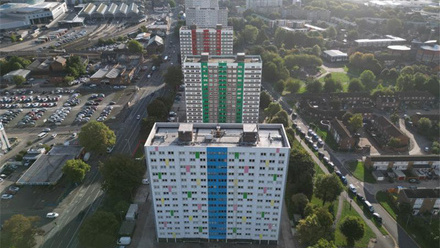Cash on delivery?
When the Chancellor Rachel Reeves laid out her fiscal rules in her first budget last autumn, she set the tone for future government spending.
Day-to-day spending would, the Chancellor promised, be balanced against tax receipts by 2029/30, and public sector debt would start to fall as a share of the economy by 2029/30. The upshot? The Chancellor has significant leeway to invest through borrowing, so long as it delivers growth.
Yesterday’s Comprehensive Spending Review demonstrated that approach in action, with total capital spending set to rise by over £45 billion against 2023/24 limits.
It’s worth restating some of the specific headlines:
-
£39 billion over ten years to deliver the Affordable Homes Programme (up from £2.3 billion per year, and only slightly below the National Housing Federation’s call for £4.6 billion per year), plus loans for social housing and to catalyse private sector investment.
-
Confirmation of £13.2 billion for the Warm Homes Plan (£5 billion of which will be loans from Government), £1 billion for social housing remediation, and a 10-year social housing rent settlement of CPI + 1%.
-
For the NHS estate, £30 billion for maintenance and repairs, including addressing RAAC.
-
£2.4 billion per year for the School Rebuilding Programme and £2.3 billion for school maintenance and repairs.
-
14,000 new prison places, delivered with £7 billion funding.
-
Nearly £20 billion of investment in local and regional transport links including buses, trams, local rail and cycle ways, plus £10.2 billion for projects such as the TransPennine rail corridor upgrades and East-West Rail.
-
£240 million to deliver regeneration projects, including investments in parks, leisure facilities, youth centres and libraries, focusing on deprived communities.
-
£625 million to train up to 60,000 skilled construction workers, as part of a wider training investment of £1.2 billion. (This isn’t capital investment, and likely still falls short of what is needed, but it’s still a welcome step forward.)
Of course, some areas were noticeable by their absence. There was little in the Spending Review for renewable energy or water services. London did not get the investment it hoped for to deliver major upgrades like the Bakerloo Line extension or Crossrail 2 (seen as key to unlocking more housing).
But overall, these are big sums of money, which are of fundamental importance for a government which has staked its political capital (and potentially its re-election prospects) on building 1.5 million new homes and retrofitting 5 million more. Many of these are also long-term investments – the ten-year Affordable Homes Programme, investment in rail projects and new nuclear power all look beyond the typical three-to-five-year horizon of politics.
More than that, investments in schools and hospitals, bike paths and swimming baths, are the foundations of real placemaking. They are what can revive boarded up high-streets and transform soulless housing estates into communities that people are proud of.
And crucially, these benefits are to be shared across the country.
One of the lower profile announcements (except among the wonks at the IFS and the Centre for Cities), is reform of the Treasury “Green Book”, which provides guidance on how to appraise different spending proposals.
This will introduce new “place-based business cases”, reduce the emphasis on benefit to cost ratios (which can lead to more money going to places which are already performing well), and strengthen guidance on “transformational change”. In other words, they will make it easier to invest in projects outside London and the greater South East, which may deliver smaller returns in absolute terms, but which are fundamental to enabling economic success.
The term “levelling up” might be out of vogue, but perhaps the idea has finally come of age.
So, it’s clear that Government wants to deliver a lot of “stuff”. And to meet these goals, the whole built environment sector will need to be mobilised.
As design professionals with the skills to take projects from inception to completion, there’s a great deal of scope of Chartered Architectural Technologists – whether focused on delivering small private homes or major public works programmes – to contribute to this collective effort.
That is not to say there are no challenges still to address, many of which are outside the scope of a Spending Review.
Government is still working to reduce planning barriers and unblock house building. Some parts of the industry continue to pursue a race to the bottom, rather than investing in quality design to create homes and buildings which will stand the test of time. Government is rightly implementing the recommendations of the Grenfell Tower Inquiry, but this means further regulatory change and uncertainty. And in many cases, Chartered Architectural Technologists continue to be inadvertently excluded from public contracting opportunities.
Delivering high-quality places that people love and support is not easy. It requires the right financing and expertise, the right regulatory and planning conditions, the right priorities and commitment to see them delivered.
CIAT continues to advocate for a system that delivers all of that.
But yesterday, the Chancellor signed a very large cheque to rebuild crumbling Britain. Now it’s up to all of us to work together to spend the money.





